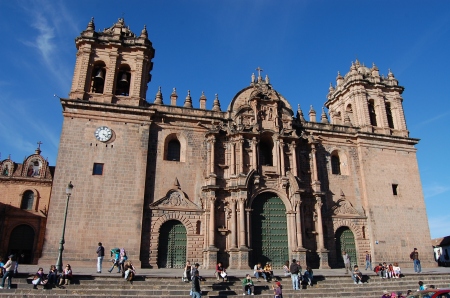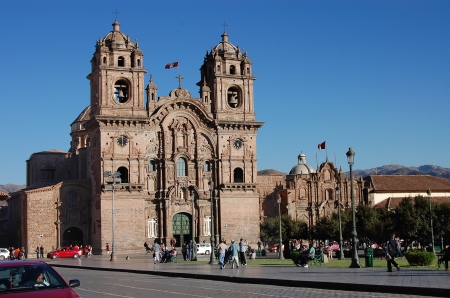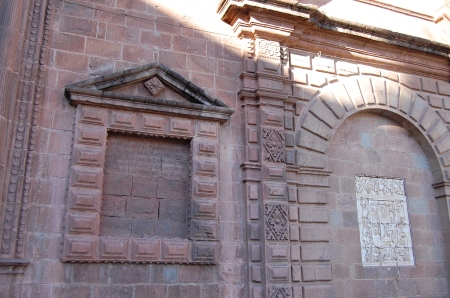Luckily, and unknowingly, last year was the 100th anniversary of the finding of Machu Picchu. For unknown reasons we traveled there. Along the way, we found the wonderful city of Lima, and Cusco, the historic capital of the Quechuan peoples, we call in the states, the Inca.
Limited to time, we went off to a few sites, and the Cateral was one of them. It was a large structure, divided into two sections. With a small area, in the second section, you stepped down into (away from the guards) to some kind of a small chapel, and I guess an entrance to the catacombs. I remember a large last supper painting, which they always make a big deal over, because the foods are local. I remember a rather large wall retablo in the second section, a lot of written material explaining the history. There are no photos allowed in these buildings. Considering what I have seen both in Lima and Seville, this is a large barnlike structure on the interior.
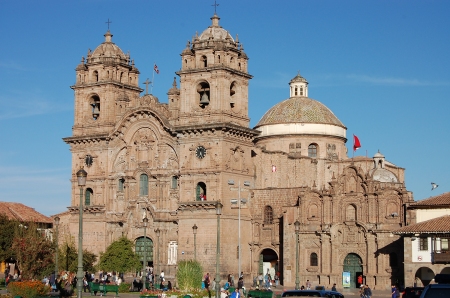 Iglesia de la Compañía de Jesús (Church of the Society of Jesus)
Iglesia de la Compañía de Jesús (Church of the Society of Jesus)
“Most of the stones from the building were taken from Saqsaywaman, an Inca holy and defensive structure located on the hills above Cusco. Due to its large size, much of Saqsaywaman remains intact. Just as the temple of Viracocha was removed and the holy stones of Saqsaywaman were employed to build the cathedral, the intentional desecrating of Inka religious architecture, once the Spaniards learned that the very sand spread on Cusco’s main plaza was considered sacred, they removed it and employed it in the cathedral’s mortar.”
When neo-cons and other cons speak about Empire and the new “manifest” destiny, they should check out the pure hatred and havoc, the Spanish, in particular, but all Europeans wreaked throughout the Americas. In another irony, as well, the fall of the Inca Empire was also due to a large expansion, which extended from Colombia to Chile.
Nothing said it best for me while standing in Plaza de Armas. Total venom and destruction of a people was never quite so obvious, as buildings were destroyed and rebuilt in the victors mold. To see all that Baroque in brownstone, for me was a shock, since so many remnants of the original culture is still obvious in Cusco. And what I have been saying for over thirty years: just because you bring in bland fare like McDonald’s and Coca Cola, it does not mean it is any less insidious and disrespectful to other cultures.
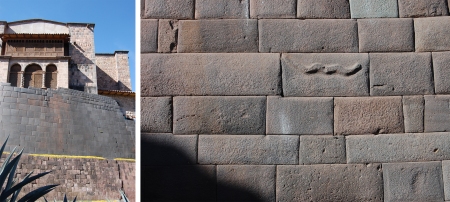
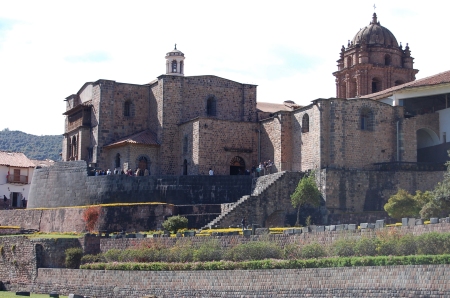 Slightly off the plaza is Convento de Santo Domingo (Convent of St. Dominic)
Slightly off the plaza is Convento de Santo Domingo (Convent of St. Dominic)
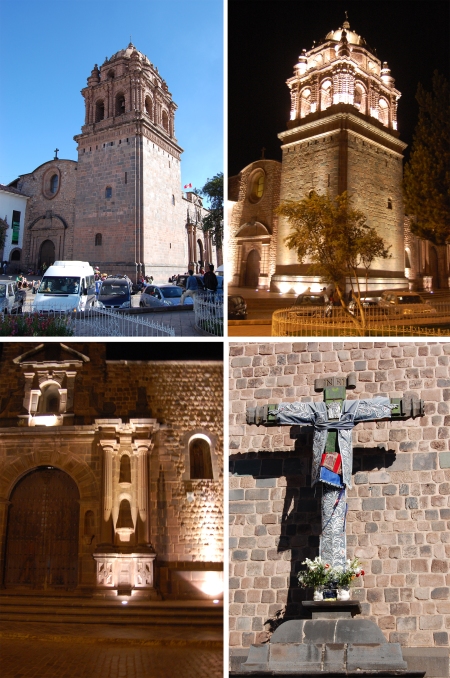 “The Coricancha (Quri Kancha or “Golden Temple”) was the most important sanctuary dedicated to the Sun God (Inti) at the time of the Inca Empire. This temple was named because all its walls were once covered with gold plates by the Incas. . . colonists built (i.e. using it as a foundation) the Convento de Santo Domingo in the Renaissance style. The building, with one baroque tower, exceeds the height of many other buildings in this city.”
“The Coricancha (Quri Kancha or “Golden Temple”) was the most important sanctuary dedicated to the Sun God (Inti) at the time of the Inca Empire. This temple was named because all its walls were once covered with gold plates by the Incas. . . colonists built (i.e. using it as a foundation) the Convento de Santo Domingo in the Renaissance style. The building, with one baroque tower, exceeds the height of many other buildings in this city.”
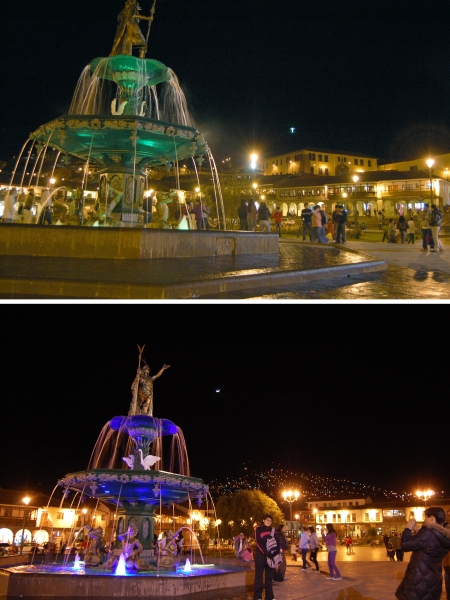 The evening seemed to add to the interest of Monumento Pachacuteq at Plaza de Armas (top, with the Cristo upon on the hill; bottom he beckons moonlight). After all, he is the Empire builder of the Inca.
The evening seemed to add to the interest of Monumento Pachacuteq at Plaza de Armas (top, with the Cristo upon on the hill; bottom he beckons moonlight). After all, he is the Empire builder of the Inca.
The plaza always seemed to be a safe haven and somewhere you could always reorganize your direction. Some guidebooks complained that young people dressed in historic or local costume would be posing for pictures and looking for money. This was nothing compared to creepier places like Egypt. And they were never in the main plaza, but side streets, as I remember.
